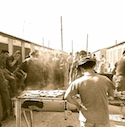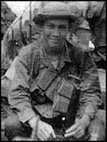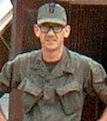According to an intelligence report by MACV on enemy strengths within Military Region III, the number of units still active and combat effective after the failed Post Tet Offensive consisted of twelve infantry regiments, three artillery regiments, fifteen infantry battalions, six sapper battalions, and one reconnaissance battalion. The casualty losses suffered resulted in an overall decrease in the enemy’s effectiveness. In addition, heavy logistical losses were inflicted that adversely affected their morale and ability to conduct major operations, so their strategy would change.
With the Paris Peace Talks and downsizing of U.S. forces, MACV predicted that the most probable course of enemy action at this time would be to attempt to outlast the resolve of the Allied Forces, especially the American’s, by instilling the belief that the VC/NVA can protract the war indefinitely. Their chosen method would be by “attacks by fire” (rocket and heavy mortar) on major U.S. bases while conducting light to moderate ground and sapper attacks against smaller friendly installations, outposts and troops, as well as the continued use of individual terrorist attacks and physiological warfare programs in the rural countryside.
The new MACV strategy to counter the enemy plans was to increase the intensity and efficiency of smaller scale Allied Forces defensive ground operations and “rocket belt” defenses around the major bases.
With emphasis now on the ARVN, MACV had to intensify the rate at which they received training, equipment and supplies. Another area that was long neglected was the technical training and proficiency for maintenance and other support units, as well as the number of qualified combat tested officers and NCO's.












 SSG Slaven
SSG Slaven SP/4 Cressman
SP/4 Cressman CPL Muon
CPL Muon CPT Rich
CPT Rich CPT Lockhart
CPT Lockhart